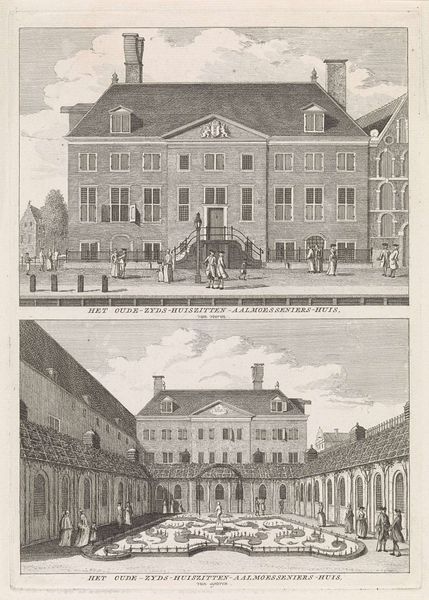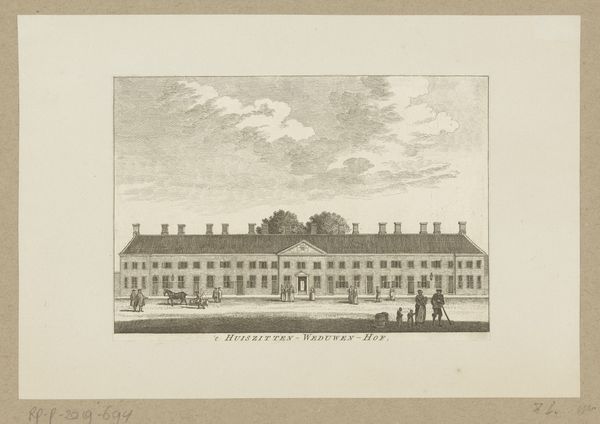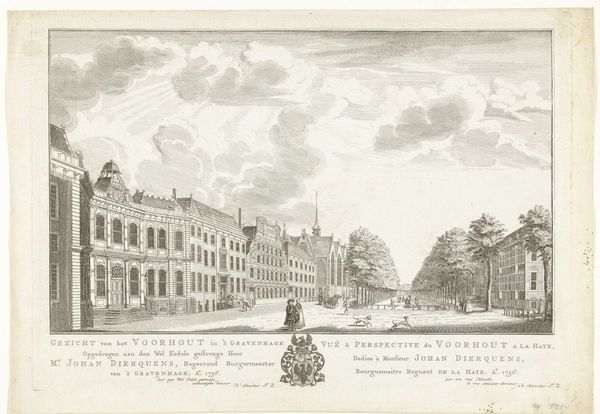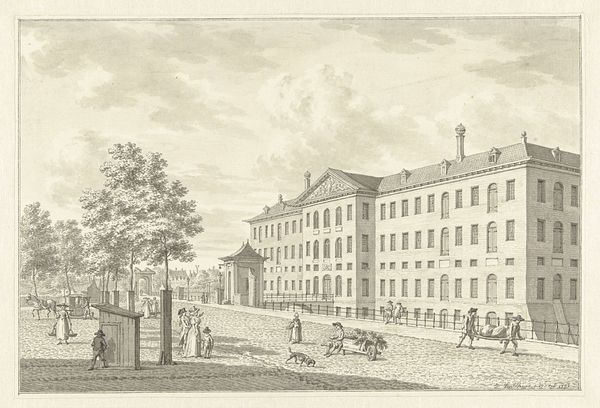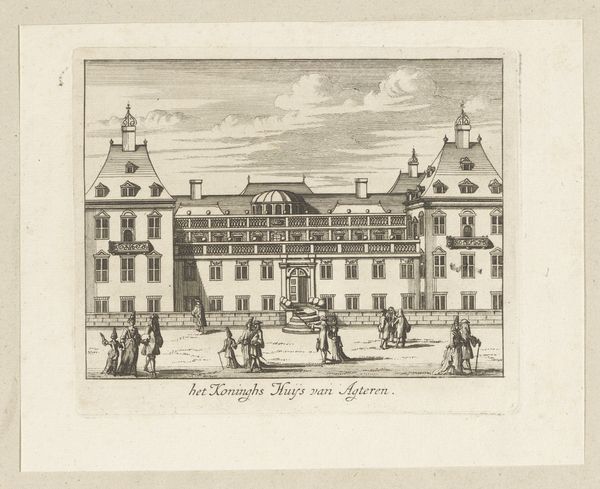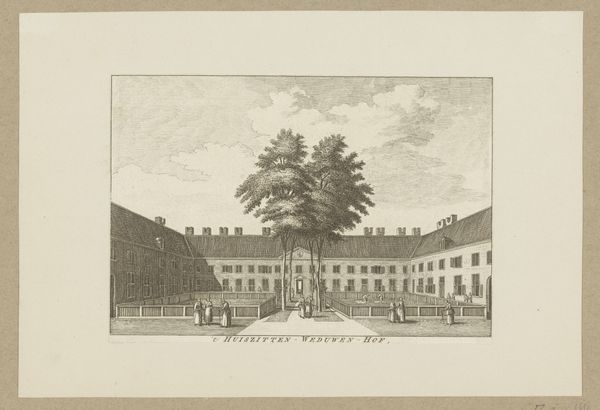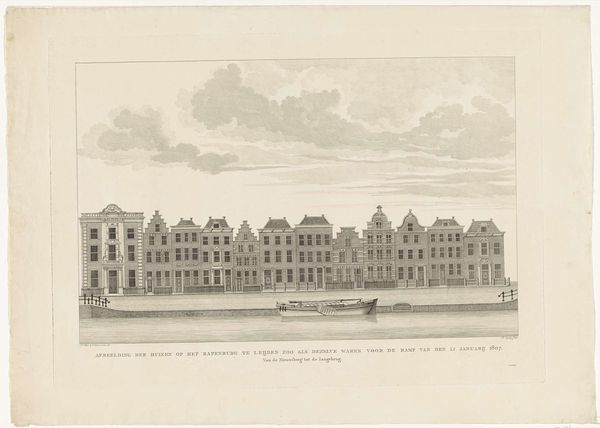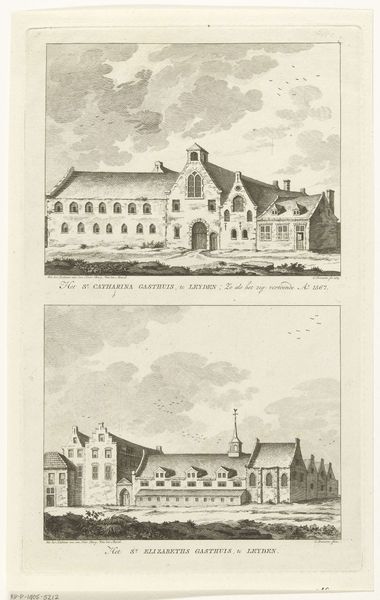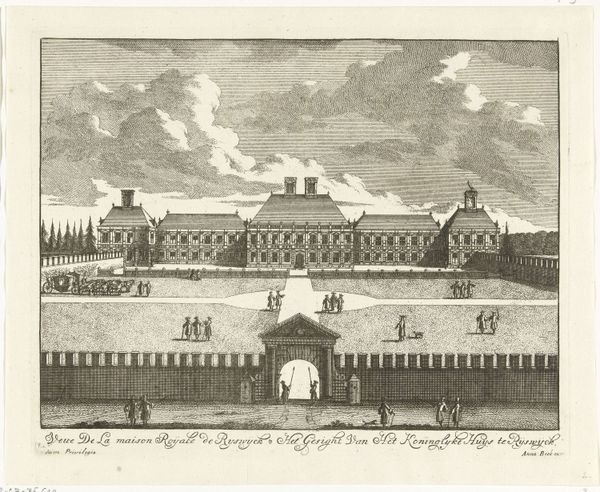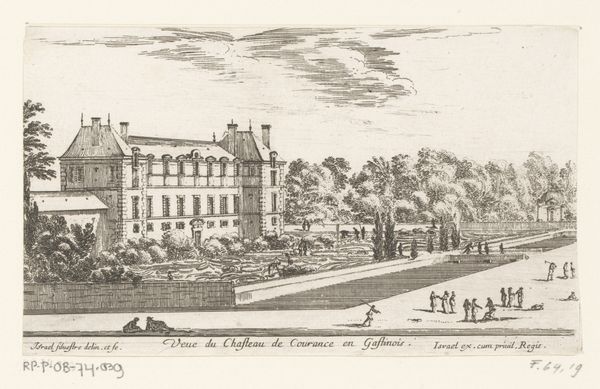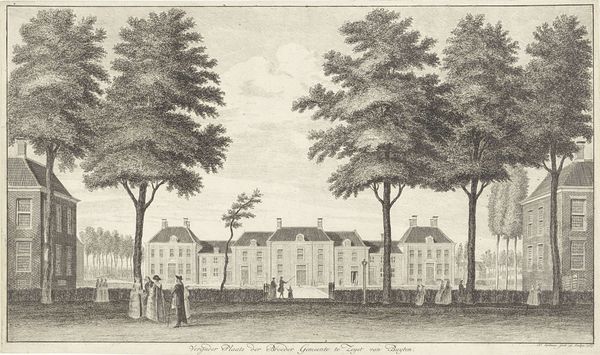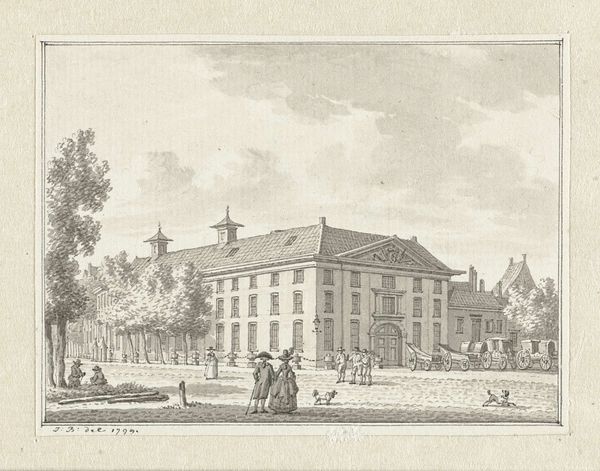
print, etching, engraving, architecture
#
dutch-golden-age
# print
#
etching
#
cityscape
#
engraving
#
architecture
Dimensions: height 293 mm, width 208 mm
Copyright: Rijks Museum: Open Domain
Curator: This is "Gezicht op 't Huiszitten-Weduwenhof van Amsterdam," a print made sometime between 1680 and 1782 by Jan Goeree. Editor: It looks quite institutional. Neat rows of windows, severe geometry, rendered with a certain sterile detachment... almost as though depicting a factory. Curator: Interesting. You've zeroed in on its potential for repetitive labor. The print is comprised of both etching and engraving. Looking closely, you see a fine network of etched lines providing tone and shadow, then bolder, engraved lines to define the architecture. The artist reproduced architecture in order to provide a factual image but did that to represent or mirror life as the inhabitants experienced. Editor: It’s fascinating to consider this building not just as a physical space but also as a social construct. This 'Huiszitten-Weduwenhof,' or Almshouse for Widows, clearly segregates women, presumably according to economic vulnerability. Is there a sense that art depicts a real-life condition, with that sense of gender and economic hierarchy built into its very fabric? Curator: Absolutely. These almshouses were essentially factories where poor women could labor in textile production, allowing for cheap manufacture of textiles with labor extracted at marginal pay, especially widows. You can feel that pressure looking at each etched line of repetitive architectural forms. It would be interesting to cross-reference these types of engravings with contemporaneous production figures of Amsterdam textiles and also records for social work programs in Amsterdam. Editor: The rows of identically dressed figures also contribute to this atmosphere, walking across that threshold and also through its gardens. I'm curious, given your focus on material, could examining the paper stock itself tell us anything about Goeree’s workshop, his access to supplies, the audience he anticipated? Was it geared toward investors or future residents of the almshouse, or was it more for everyday citizens. Curator: That’s an excellent question. Given the variations that would have occurred when creating a run of prints, there may even be some variability of the stock in individual images surviving until the present day. As a print, the artwork is accessible—as is hopefully our conversation! Editor: Indeed! Seeing it in its social context transforms our appreciation, as it reveals an important chapter in Amsterdam’s economic and social history—the story of women’s labor in an ever-changing capitalist society.
Comments
No comments
Be the first to comment and join the conversation on the ultimate creative platform.
